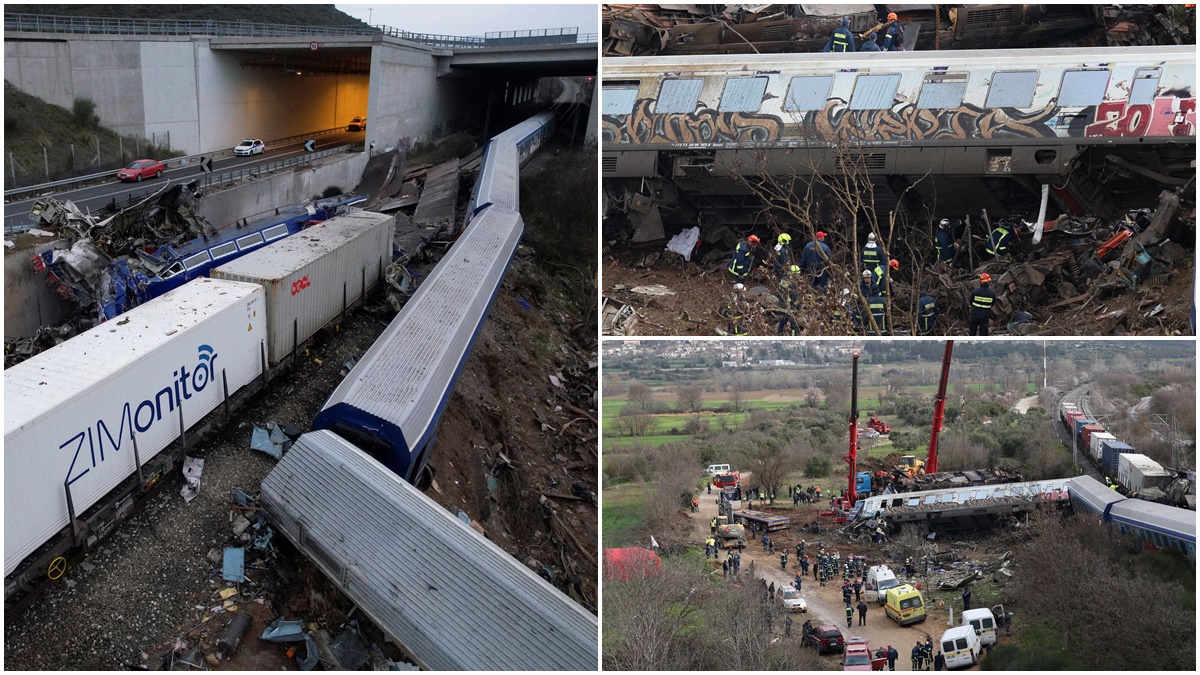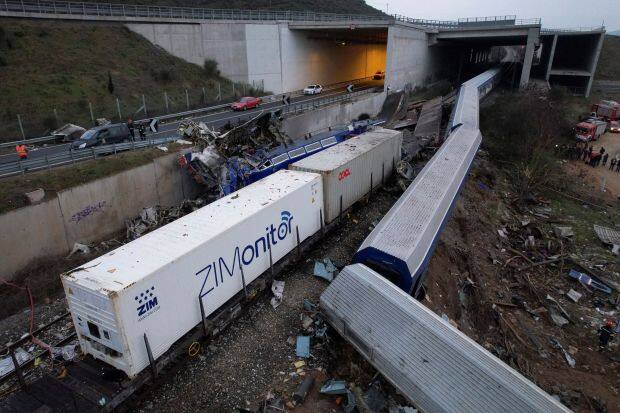 1/8
1/8
A passenger train and a cargo train collided head-on in Greece on Tuesday night, killing at least 36 people and injuring 85 as the country’s deadliest rail crash in decades threw entire carriages off the tracks. (Reuters photo)
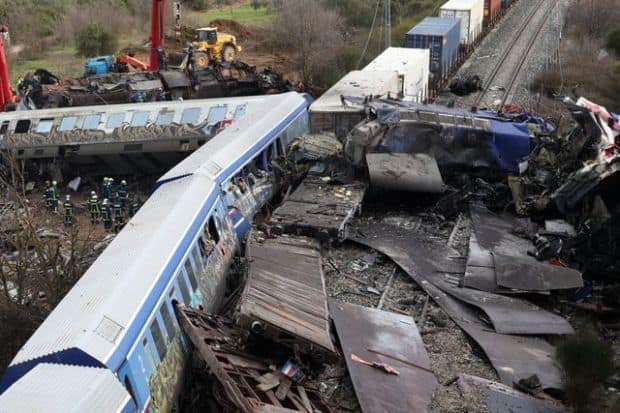 2/8
2/8
Sixty-six of those injured were hospitalised, six of whom are in intensive care. The crash occurred as the passenger train emerged from a tunnel. Derailed carriages, badly damaged with broken windows and thick plumes of smoke, could be seen on the site, where rescuers were looking for more survivors. (Reuters photo)
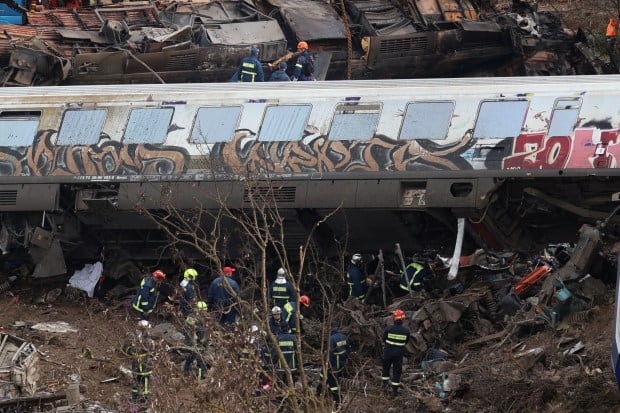 3/8
3/8
Rescuers operate at the site of a crash, where two trains collided, near the city of Larissa, Greece. (Reuters photo)
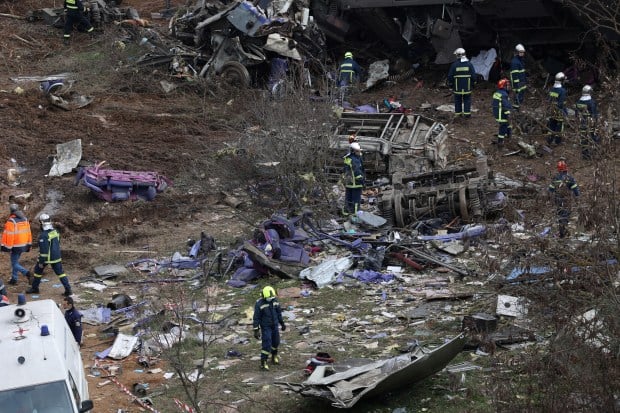 4/8
4/8
The two trains had been on the same track when they crashed into each other. Police temporarily detained the station master in Larissa and had summoned witnesses for questioning. (Reuters photo)
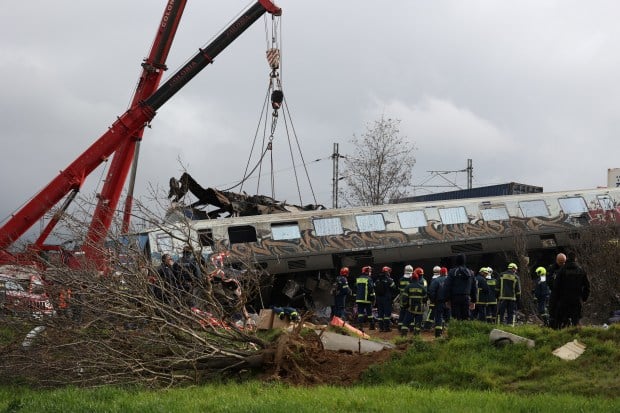 5/8
5/8
Greek President Katerina Sakellaropoulou has cut short a visit to Moldova to return to Greece following a train collision. “Unfortunately, I have to interrupt my visit in order to be close to my people, to support those who need it,” she told a joint news conference in the Moldovan capital Chisinau with Moldovan President Maia Sandu. (Reuters photo)
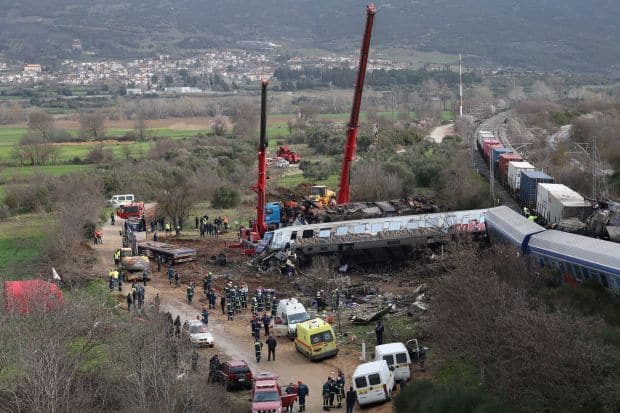 6/8
6/8
Greece’s ageing railway system is in need of modernising, with many trains travelling on single tracks and signalling and automatic control systems still to be installed in many areas.(Reuters photo)
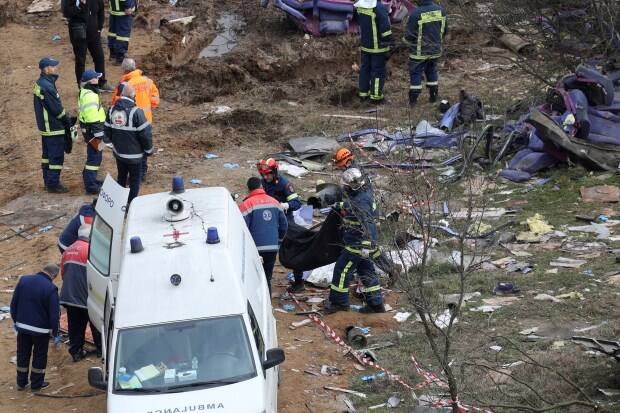 7/8
7/8
Greece sold railway operator TRAINOSE to Italy’s Ferrovie dello Stato Italiane in 2017 as part of its international bailout programme, expecting hundreds of millions of euros to be invested in rail infrastructure in the coming years.(Reuters photo)
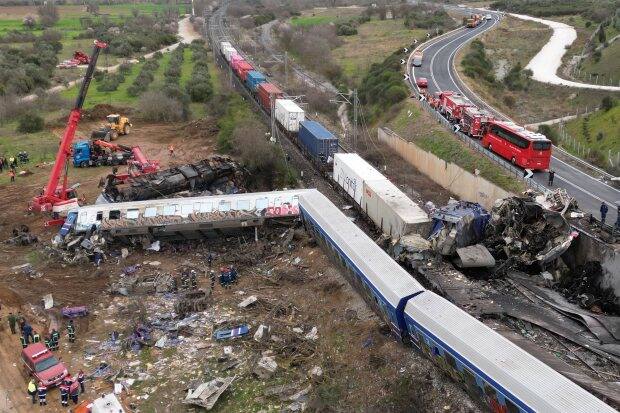 8/8
8/8
A crane, firefighters and rescuers operate after a collision in Tempe near Larissa city, Greece. (AP Photo)

